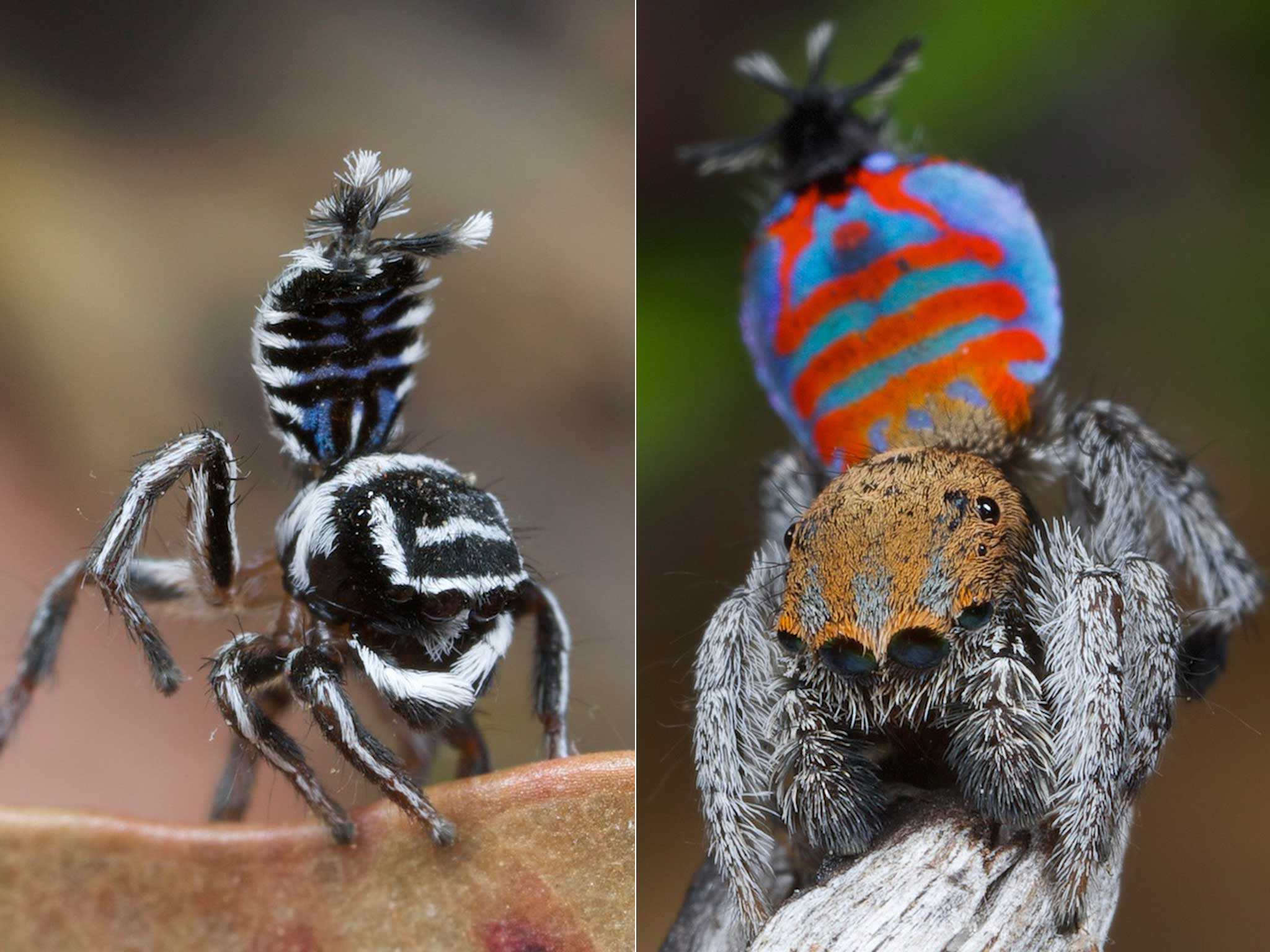'Sparklemuffin' and 'Skeletorus' spider species discovered by university graduate student
Entomologists hope 'friendly-looking' arachnids may challenge preconceptions around spiders

Two newly discovered Australian spiders may challenge your preconceptions of the creepy crawly species.
Nicknamed ‘Sparklemuffin’ and ‘Skeletorus’, the new species of spider were discovered in southeast Queensland by US university graduate student Madeline Girad and a friend, Live Science reported.
Ms Girad, who studies peacock spiders at the Californian University of Berkley, gave the arachnids – formally known as Maratus jactatus and Maratus sceletus – the affection names based on their unusual markings.
The two spiders have also been captured on camera showing off their dance moves.
Peacock spiders, first discovered in the 1800s, are so-called due to their colourful abdominal flaps that they display during courtship and in one case during ritualised contexts between males.
The ‘Sparklemuffin’, measuring from 4.5mm to 4.6mm, despite its beautiful markings initially did not excite entomologist Jurgen Otto as it appeared similar to previously discovered species.
Mr Otto, who specialised in photographing the arachnids and co-authored a report with David Hill on the two new species, told The Independent, "the longer I worked (played) with him the fonder I became. It was its docile nature that charmed me, and its soft teddy bear like appearance."
But it was ‘Skeletorus’ who "blew me away," Mr Otto explained. “When [the male] got within a few centimetres of the female, he exploded into a firework of activity,” he explained.
"The spinnerets were extended and flicked around at an amazing speed, one of the legs was flexed like he wanted to show off his muscles, and he moved constantly from one side of the grass blade to the other."
Mr Otto, who later travelled to the original location where Ms Girad first found the spiders and photographed the species, added: "Makes you wonder how many designs are out there and whether we will ever find them all."
The entomologist hopes that the publicity from his photographs and videos – as well as the appearance of the two spiders – will help dispel some of the bad feeling towards spiders.
Join our commenting forum
Join thought-provoking conversations, follow other Independent readers and see their replies
Comments